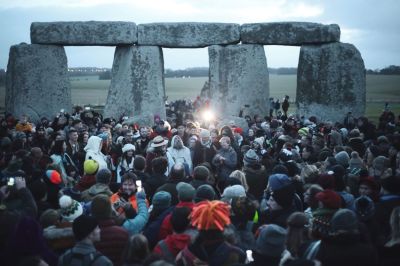Is new paganism actually pagan?

Recently in The Guardian, Emma Beddington covered a new twist on an old practice. According to the 2022 U.K. census, writes Beddington, “74,000 people declared they were pagan, an increase of 17,000 since 2011.” Meanwhile in the U.S., “a 2014 survey by the Pew Research Center estimated at least 0.3% of people … identified as pagan or Wiccan, which translates to about one million people.” And, though it’s not clear how anyone could know this, “That number is expected to triple by 2050.”
Those numbers, while a small minority of the population, are significant when set against the overall decline of Christianity in the West. According to British historian Dr. Ronald Hutton, today’s version of paganism is “a religion in which deities don’t make rules for humans or monitor their behaviour — humans are encouraged to develop their full potential.” This comes with a heavy emphasis on being Earth-conscious, with rituals and festivals focused on connecting with nature. In this way, suggests Hutton, paganism is filling “a need for a spiritualised natural world in a time of ecological crisis.”
Beddington describes the new paganism as a “tolerant, open, life-affirming, female-friendly faith.” It does seem to check all the right contemporary Western boxes: a feeling of transcendence without many hard commitments, a rejection of traditional morality while keeping a vague inclusivity, and enough concern for the natural world to qualify as a social justice cause. Or, as a group based out of the University of Massachusetts Amherst summarized: “Pagans view the world as a place of joy and life, not of sin and suffering. We believe that the divine is here with us in the natural world, not in some faraway place in the sky.”
At the same time, the new paganism is a world away from ancient paganism. Though often a catch-all term for a wide variety of pre-Christian beliefs, paganism suffers from a shortage of written records. However, what we do know would not be best described as a universe born out of “joy and life, not of sin and suffering.”
In Hesiod’s Theogony, the Greek version of the origin of the cosmos and the gods, the birth of each divine generation is preceded by violence. Uranus, the sky, produces children with Gaia, the Earth, but hates them. Of their children is the titan Cronus who castrates his father. His blood falls onto the Earth and sea and creates still more gods. Cronus is, in turn, dethroned and imprisoned by Zeus.
Celtic paganism does little better. Drawing on contemporary sources, most scholars believe the Druids enacted human sacrifices on a broad scale to appease the forces of nature, which they saw as temperamental and hostile. One example is the Lindow man, whose mangled remains suggest a ritual death as part of cultic sacrifice.
Employing St. Augustine’s approach to the depravity of pagan gods, writer Paul Krause offered this critique:
The pagan gods were born from patricide and rebellion. They were born from primordial acts of sexual violence. Their patronage was in the civitas terrena which cared only to advance its depraved lust to control.
Modern pagans reject ancient paganism. They find solidarity with the idea of human equality and dignity, see the natural world as a place of order rather than of chaos, and call for sexual restraint, the protection of children and disadvantaged groups, the end of slavery, mindless conquest, and human sacrifice. To this extent, they are embracing the innovations of Christianity.
After all, it was Christianity and not paganism, as historian Tom Holland has explained, that taught that men, women, and children, slave or free, share the imago dei. It was St. Patrick, not the Druids, who believed and taught Ireland that “the Earth is the Lord’s and the fullness thereof” and not subject to hostile spirits who are appeased by bloodletting. It was Christianity that turned Nordic peoples away from a belief system that committed them to conquest, plunder, and death in battle.
In short, all the things that make modern paganism appealing to modern people aren’t pagan. Though many Westerners are bored by the hollowness of materialism and desperate to fill the spiritual vacuum it has left, they will not find answers in dead religions. Only Jesus offers the truth: “The thief comes only to steal and kill and destroy. I came that they may have life and have it abundantly.”
Originally published at BreakPoint.
John Stonestreet serves as president of the Colson Center for Christian Worldview. He’s a sought-after author and speaker on areas of faith and culture, theology, worldview, education and apologetics.
Kasey Leander is a Fellow with the Oxford Centre for Christian Apologetics (OCCA). Prior to his time at OCCA, Kasey earned an undergraduate degree in history and PPE (Politics, Philosophy, and Economics) from Taylor University. While at Taylor, Kasey served in various ministry roles on campus and was active in student government. He has also worked briefly in politics, serving as an intern in the US Senate in Washington, DC.




























